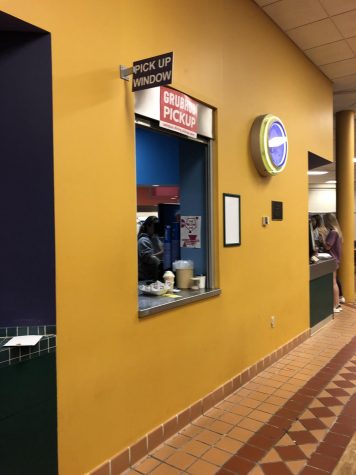The Unfairness of Student Meal Plans
The main student dining hall, “convo”.
September 20, 2019
As far as meal options go around Ashland University, dining services offers very limited alternative options for meal plans.
Specifically, student teachers and students with internships should be able to choose what meal plan fits best for them. They are gone for at least two meals every day, which would work wonderfully with the 80-meal plan.
However, the policy is that if you are living in a residence hall, you are not able to have anything except at least the 240-meal plan. The 80 or no meal plan option is only available to those living in the senior apartments or off-campus.
When told about this situation, dining services recommended a few other options for using the meal swipes, but offered no reasoning in why student teachers could not switch to a lower meal swipe plan.
The secondary options for lunches to use meal swipes at are the Eagle’s Nest or the Ashland Marketplace. Many of these students have food allergies, such as gluten. There are very few options to get a nutritious meal at the Eagle’s Nest that also align with these allergies.
The Ashland Marketplace also has outrageous prices so you end up with barely any food out of a lot of swipes. Dining services traps you into the system so that you have to buy food from their sources, all of which are highly overpriced.
To purchase a loaf of bread from the Marketplace would cost you $2.43 while a loaf at a regular grocery store would typically cost you around $1.19. Furthermore, they charge $4.25 for a gallon of milk which you could typically get for $2 cheaper at any other grocery store.
When looking at the financial side of things, it does not make any sense for anyone to buy from the Ashland Marketplace, so why would dining services expect “broke college students” to use this as a resource.
Keeping to the financial side of things, student teachers and students with internships already have to pay for their own gas, which some have to travel 30 minutes or more one way. For student teachers who still live on campus, they have to do this every day of the week. Most of the students in these positions have to leave at least an hour before the Nest even opens, making it impossible to get a nutritious breakfast and leaving no option for lunch.
It would be way more financially smart for the students if they were able to buy groceries from a regular store rather than having to pay for a meal plan. They can go to the grocery once every one to two weeks and be set. It is very inconvenient to have to get food from the Nest several times a week for breakfasts and lunches when they are already gone from campus over 10 hours every day.
How can this system make any sense to those who control the meal plan system? You are doing your own students a disservice by not being flexible based on their situation and then charging outrageous prices for your alternative options.
Finally, when the numbers are added up and broken down concerning the 240 meal plan, the results are outrageous and students get ripped off. If you take the 240 meal plan, which costs $2,365, it comes out to $9.85 for a meal swipe. The price that each swipe is worth at the Eagles Nest is $6.75, over three-dollars less than what it should be.

The Eagles Nest, where many students get their meals on the go.
Also, if you have extra swipes at the end of each semester dining services allows you to turn them in for vouchers at the AU bookstore, very thoughtful. However, they give you 100 bookstore dollars for 30 swipes. This comes out to $3.33 per swipe, one-third of what an original meal plan costs at $9.85.
Receiving those vouchers is in no way helping you as a student, but rather dining services is ripping you off financially and making easy money off of each student.
Obviously the university and dining services needs to make money so that they can provide all of the food options for the students each year. However, when offering incentives they tend to rip you off financially. Ultimately, I understand that most students may be content with the 240 plan, but I wish there was at least an option for seniors in these situations of student teaching or internships that never find themselves on campus.




